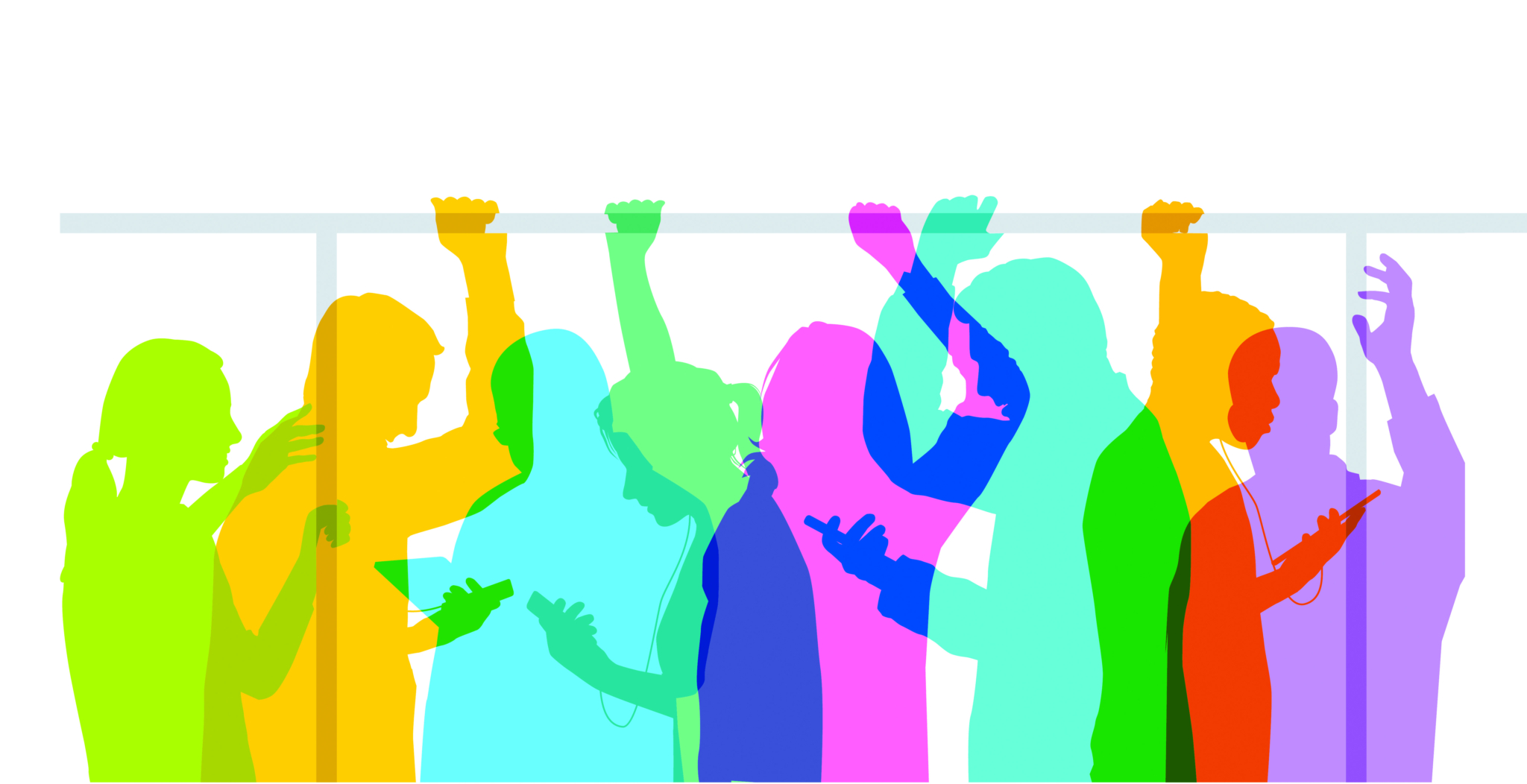Growing Influence L.A.'s new curb on plastic utensils is one example of how UCLA Luskin research impacts policy
By Mary Braswell
Los Angeles County is restricting use of the plastic tableware that clogs our landfills and waterways.
The L.A. City Council launched a coordinated effort to deter harassment on the city’s streets and transit systems.
And the LAPD created a new bureau to elevate the community’s voice in places where law enforcement has a rocky history.
Each of these actions, taken with the intention of improving the lives of Angelenos, relied on research produced by the UCLA Luskin School of Public Affairs. And they are just three recent examples that underscore the School’s growing influence as it turns incisive scholarship into real policies aimed at building a more just and equitable world.
This calling is not new. The work done by UCLA Luskin’s public policy, social welfare and urban planning programs and more than a dozen affiliated centers and institutes has long been a source of data-driven guidance for decision-makers in the public and private sectors. The School’s impact has been felt across the region, nation and world.
“We must always ask ourselves, ‘What’s the benefit of this work?’’’ said Anastasia Loukaitou-Sideris, the School’s associate dean of academic affairs. “Our research is meant to be applied, not just read by other academics, or what, really, is the use?”
CHALLENGING THE THROWAWAY CULTURE
L.A. County had identified a problem. In search of solutions, it looked to the UCLA Luskin Center for Innovation.
The problem was the harmful environmental impact of disposable forks, knives, spoons and other plasticware, used once then tossed in the trash by 10 million county residents.
The county had pledged to phase out these single-use plastics, and needed a strong base of knowledge to craft an effective ordinance. The Center for Innovation was contracted to study what the products are made of, how they impact the environment and economy, why they cannot be easily recycled, what alternatives are available, and more.
Momentum grew in January 2020, when the Center for Innovation delivered a high-profile report identifying prime targets for policy action. Then, COVID-19 struck.
“The county had decided that it really wanted to take firm action,” said Daniel Coffee MPP ’20, a Center for Innovation project manager who has worked on each phase of the plastics study.
“But the pandemic created a really significant resource crunch for the county, as it did for many municipal governments, and understandably they prioritized public health and services.”
In 2021, the legislative effort to curb plastic waste got back on track. The L.A. County Board of Supervisors voted to eliminate single-use plastics in county-run facilities, though it stopped short of broadening the new rules to restaurants still affected by the pandemic. Other local governments also stepped up, including the L.A. City Council, which unanimously voted to make disposable foodware at restaurants available only if requested by customers.
“Only upon request” rules are relatively simple to implement, Coffee said. “Those sorts of policies don’t require the business to retool work areas or install new equipment or secure new types of products. They can take effect almost immediately.”
Crafting longer-term strategies is more complex. One significant reason is that alternatives to plastic — paper, bamboo and bioplastic, for example — have hidden carbon footprints of their own.
“Replacing a plastic item with a non-plastic version that is still disposable and single-use is not always the better move,” Coffee said, saying the real game-changer comes “the moment you stop throwing something away right after you’re done with it.”
“That’s why we can so confidently say that reusable products are the way to go, wherever possible, in any context. It’s really important to get this right.”
Coffee’s research into the most effective ways to tackle plastic waste began during an internship with the L.A. County Chief Sustainability Office. He later joined the Center for Innovation staff, which recently produced an addendum to the county report. This time, the focus was on the impacts of the COVID-19 era on the plastic waste stream.
“Long story short, it’s not good. You have a massive, massive uptick in medical waste,” including packaging for sterile products as well as disposable masks that degrade into harmful microplastics, he said. Consumer behavior has also shifted during the pandemic, with more goods, groceries and take-out food encased in plastic.
“It just adds to the need for prompt action. And it underscores the importance for institutions like the Luskin Center to have these strong relationships with both municipal and state-level government institutions,” Coffee said. “They know they can reach out to us to stay apprised of things that are dynamically changing.”

SAFEGUARDING L.A.’S PUBLIC SPACES
When members of the L.A. City Council decided it was time to deal head-on with an increase in harassment on the streets of Los Angeles, they knew where to turn.
Loukaitou-Sideris, a distinguished professor of urban planning as well as the Luskin School’s associate dean, had shared her extensive research into harassing behavior many times, in high-level government and academic settings and through a book published
in 2020.
She had also lived it.
As a young university student in Athens, Greece, Loukaitou-Sideris chose to walk half an hour to attend class rather than risk being groped on the bus — an experience familiar to women around the world and across generations.
“It is, sadly, a global phenomenon,” she said. “And I am sorry to say, it is very prominent in Los Angeles.”
Loukaitou-Sideris’ statement is backed up by numbers, collected through an extensive survey of transit riders from local campuses. The survey asked 400 students from UCLA, 650 from Cal State Los Angeles and 250 from Cal State Northridge whether they had experienced any of 16 types of harassment in the previous three years in a public transit environment. Of the women who responded, more than 80% said yes.
“These are very, very high numbers,” said Loukaitou-Sideris, whose research was published by the Lewis Center for Regional Policy Studies at UCLA.
In the fall of 2020, her work came to the attention of a legislative deputy in the office of Los Angeles City Councilman Joe Buscaino. The aide had personally witnessed street harassment and reached out to Loukaitou-Sideris for help in crafting a motion urging city leaders to act.
“I was more than happy to be approached by Councilman Buscaino’s office, and I was even more thrilled that this motion first passed the committee unanimously and then the City Council,” she said.
The motion, adopted in March 2021, mobilized several city departments to work together to respond to street harassment, which disproportionately affects not just women but people of color, people with disabilities, those in the LGBTQ community, older adults and adolescents.
“As the second most populous city in the nation,” the motion stated, “the City of Los Angeles has a responsibility to protect its most vulnerable residents from harassment in public spaces.”
In addition to measuring the scope of the problem, Loukaitou-Sideris’ study recommended strategies for increasing safety in public spaces. Smart urban design, such as providing adequate lighting, is critical. New technologies can provide real-time arrival information at transit stops, as well as apps and hotlines that make it easier to report harassment. Educational campaigns can embolden bystanders to intervene to protect one another.
Loukaitou-Sideris stressed that restoring confidence in the safety of public spaces is likely to encourage the use of transit — key to the sustainability goals of many urban centers.

VISION FOR COMMUNITY-ENGAGED POLICING
Researchers do acknowledge one frustrating reality: Compelling evidence does not always lead to decisive action.
“Oftentimes, research is exploited as a way to avoid doing something,” said Jorja Leap, adjunct professor of social welfare and an expert on criminal justice and community empowerment.
“To be blunt, that is what happens with a lot of research and evaluation. It’s carefully designed, it’s rigorously carried out, everybody says, ‘Thank you very much,’ and it goes onto a shelf, usually with several other reports.”
So Leap was stunned and heartened when the Los Angeles Police Department created a new bureau for community-engaged policing, led by a person of color who reports directly to the police chief — recommendations her team had put forward in a report commissioned by outside interests.
Leap and her colleagues spent more than a year studying the effectiveness of the LAPD’s Community Safety Partnership (CSP), a strategy instituted years earlier to build trust between police and residents of the city’s most troubled public housing developments.
Civil rights attorney Connie Rice was the driving force behind the evaluation. For decades, Rice had sparred with the LAPD before deciding to join forces with the department to work for change.
It was she who steered the vision for community policing, and who brought in Leap to guide the way with authentic academic research. The UCLA team was given a budget, access to CSP sites, and assurances of independence from both Rice and the LAPD.
“We were the rigorous scientific vessel for the thoughts and feelings and beliefs and experiences of the residents,” Leap said.
Working with Social Welfare Professor Todd Franke and a team of field researchers and analysts from across UCLA, Leap launched a study that involved 425 hours of observation, 110 interviews, 28 focus groups, and nearly 800 surveys to capture the views of police officers and residents in Watts and Boyle Heights.
“It is not a lovely report,” Leap said. “Many of the residents had a horrendous history with police.”
Distrust of police rightfully persists, but most survey respondents reported feeling decidedly safer under the CSP program, which assigned specially trained officers to work side-by-side with residents to understand the community’s assets as well as its dangers.
The final report endorsed the Community Safety Partnership as a model to be integrated throughout the city, offering 45 recommendations to make it work, including the establishment of a full-scale LAPD bureau.
“I was shocked by the response on the part of the LAPD. We made some major, major recommendations, and some of the most difficult have been or are in the process of being carried out,” Leap said.
In this case, the grave events of 2020 may have served as an accelerator instead of a brake. The CSP report was unveiled in March of that year. Two months later, the killing of George Floyd sparked a worldwide uprising against police brutality. And in July 2020, the LAPD unveiled its new Community Safety Partnership Bureau, led by Emada Tingirides, the department’s second Black female deputy chief.
Leap’s work with the program continues. With the input of community residents, she is designing new tools to ensure that CSP officers are fully trained, that residents continue to have a seat at the table and that the dozens of recommendations her team put forward are heeded.
“As researchers,” she said, “we’ve got to hold public agencies and institutions accountable and say, ‘Don’t pass the buck.’ ”
